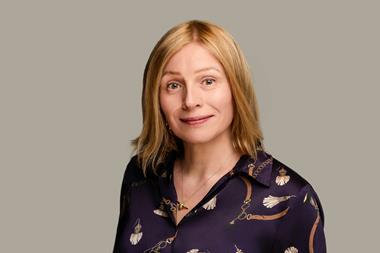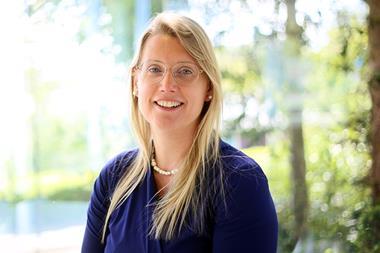There is a feeling of instability in the Italian pensions arena that has little to do with uncertainty about future interest rate movements, the Middle East crisis or equity market volatility. Rather it is due to continuing doubts about governmental pensions policy.
Spurred by a growing awareness that an ageing population could see pension spending reach 16% of GDP by the 2030, pension reform has been on the agenda for a decade. During that time there have been several reform efforts. The latest changes, introduced in 2004 and in 2005 by the centre-right administration of Silvio Berlusconi, were aimed at raising the effective retirement age and promoting private occupational pension schemes. But they were deemed too moderate, with their slow phasing raising questions about the sustainability of the transition.
And the emergence of a centre-left government in April this year has raised further questions as it not clear whether the new team will continue down the route outlined by the previous one or embark on its own overhaul.
“The new government immediately talked about a new pension reform because treasury minister Tommaso Padoa Schioppa made it very clear that the budget deficit is running out of control and that 80% of fiscal expenditure is created by just four items: pensions, the public health system, transfers to local authorities and public servants,” says Guido Blasco, a consultant at Hewitt in Milan. “So if we want to reduce budgetary expenditure we have to intervene in these four items. So for sure we are going to have a new pension reform.”
The lack of serious money had held back the development of pension funds, with employers and employees only paying 1-2% of gross pay into them. So for many pension funds the focus is on its attitude to severance pay money, the TFR, which had been earmarked for transfer to raise their low level of funding, but just when is far from clear.
“Pension fund administrators are focusing their attention on the impact of the reform rather than on investment related topics,” says Paolo Pellegrini of the Foundation for the Development of the Italian Pension Funds Market (Mefop). “And it must be stressed that the main issue is the payment of the TFR to pension funds.”
“Padoa Schioppa has indicated that he is in favour of an acceleration of legislation on pension funds, including the utilisation of the TFR, but we don’t know what measures he has in mind,” adds Blasco.
“The new government has suggested that there may be an acceleration of the process,” agrees Stefano Pighini, board member of Fopen, the pension fund of energy utility ENEL “But it may already be too late because to achieve this the revised draft would have to be tabled in September or October at the latest, but everything stopped in August and the conversations are only starting again now. If they move rapidly they could bring the start of the TFR contributions forward six months to 1 January 2008. But we need almost one year to be ready. “
But not all pension funds are focussed on the TFR. “For us the TFR issue will not have such a great impact because we have already attracted around 60% of our potential membership,” says Andrea Giradelli, operations director of chemical and pharmaceutical employees’ industry-wide pension scheme Fonchim. “We have 121,000 members and it is rising, and we benefited from the merger with the pension fund of the Italian unit of German chemical company Bayer, when some 2,000 people joined us at the beginning of this year with the money, €50m pension fund assets, being transferred in early January. Now we attract gross contributions of some €220m a year.”
Nevertheless, pension funds performed well last year. “Italian pension fund results in 2005 mainly depended on the performance of equities,” notes Pellegrini. “But we have to distinguish between open and closed occupational pension funds. On average the open pension funds posted an 11.5% return on portfolios that were 49% in equity, 45.3% in bonds and 5.7% cash, with the equity component returning 16.2%. The average closed pension fund performance was 8.3% on portfolios that were 30% equity, 67% bonds and 3% cash.
“It is worth noting that those closed pension funds that had turned themselves into a multi-compartment scheme saw an average performance of 7.4%, with an equity return of 14.9%. This is because with the transition towards multi-compartment, individuals tend to choose the more prudential compartments, and consequently the asset allocation of multi-compartment closed pension funds was 28% equity, 69% bonds and 3% cash.”
“Last year went very well indeed because the equity market was pretty high at the end of the year,” says Pighini. “We had our best year’s performance ever, of 8.4% up from 4-5% during the previous couple of years, for our main line of investment, our bond offering which has an asset allocation of 30% equity and 70% bonds and into which 75% of our members are enrolled. We had a 17% return from our equity investment offering, where the portfolio is 70% equity and 30% bonds, and our balanced line, which is 50:50, posted almost 13%. But our monetary offering, with a six-month JPMorgan cash benchmark, suffered from the very low rates during 2005 and rose only 1.9% net.
“The first quarter of this year was a continuation of last year, but in the second quarter we were pushed back to square zero, that is to say we are even behind where we were at the start of the year. By mid-July we were some 1% below where we had been in December 2005 in each line except the monetary line, which was performing as it should. We don’t know exactly what the main reason is for this but it started with a lot of managers taking their profit from the first quarter growth and then there is the impact of the situation in Iran, Iraq and so on.”
“Generally, those Italian pension funds that have separate funds to cater for differing risk levels and the ages of members have more or less the same asset allocation,” says Giradelli. “Our results last year were mainly the result of our position in bonds, which was a bit shorter than the average. But while the factor that contributed some small underperformance in 2005, that we are shorter on duration than our colleagues, gave us an overperformance this year and they lost due to the rise in interest rates. But we didn’t benefit from the rate of exchange of dollars because we were covered.”
Fonchim has three compartments. “The most conservative is Moneta, which it is invested totally in sovereign bonds,” says Giradelli. “It was small and is getting smaller, not because of its fund manager, which is Rothschild and which has shown good results, but because it is the fund members enter just some three or four years before retirement. Our main fund, Stabilità, has 30% in equities and 70% in bonds, and our smallest is Crescita, which accounts for 2% of our investments with 60% equities and 40% bonds.
“Our asset allocation is unchanged and has given good results. ‘Mr Fonchim’, that is our average member, has had an internal rate of return of around 4% while some members have had more than 6%,” says Giradelli. “It depends on when they came in. Those who invested a lot during 2002 and 2003, the two black years, have made some 5-6%.”
But the pension fund of Unicredito Italiano is transforming its asset allocation. “Last year real estate boosted our performance,” says pension fund vice-director Roberto Veronico. “For historical reasons it has always been high and in 2005 was around half of our portfolio. But a few years ago the percentage was much higher, something around 90% and then it has slowly decreased to 80%, 70% until this year slightly more than 50%.”
The heavy real estate weighting harks back to a more innocent time. “For many years pensions were related only to salary increases and not linked to an increase in our assets, so we weren’t focussed on getting a good return from our investment,” recalls Veronico “Asset management was focused on saving money and not on high yield returns, and real estate perfectly achieved this kind of result. A comparison of the real estate market index with the equity market, for example with the S&P-500 index, shows that over the long term real estate gives the best results. Equities have much higher volatility which means that in good years you get a lot of money from your equities but in bad years you lose a lot.
“This does not happen with real estate. It’s a more cyclical market and so you have trends, and with real estate a trend can last for several years and not only a few months like the much more nervous equity markets. So this was the main reason why we used to have a lot of real estate.”
So why change? “Increases in our pensions are now linked to the increase of our assets, and this happens every year,” Veronico says. “So it’s not satisfactory just to have a good result after some years, pensioners want to look at returns every year. We started adding equity and bonds and this is why at this moment we are 50:50, with equities something like 15% and bonds 35%.”
Looking to the future Veronico does not see anything that would signal a rethink of the fund’s approach. “We have a strategic asset allocation and as a pension fund we do not trade intra-day,” he says. “For example, some managers think that in the second half of the year there will be a rally in the equity market, so maybe that’s an opportunity. But we are not going to significantly overweight our equity side just for a rally.”
Giradelli also finds it difficult to read the runes. “Interest rates are stable at the moment, but they can go up or down, and who knows what will happen in a year or two?” he says. “What we have to think about now with the situation in the Middle East is what is gong to happen tomorrow or the day after tomorrow. So while I have no scientific evidence I think that interest rates will stay roughly as they are.”
Pighini sees more tangible challenges: “Under the latest reform, in 2008 people will be able to move from the funds they are in to other funds or to join a fund offered by banks or go to insurance companies,” he says. “This will intensify competition, and I believe the focus will be on performance and costs. And this competition may stimulate a move towards consolidation. The smaller funds have higher costs because they have fewer members but must still pay overheads and cannot gain the discounts from asset managers that come with higher volume. So there may be a number of mergers.”
Indeed, the merger of Fonchim and the Bayer Italiana pension fund, which was seen as an endorsement of a complementary pension system that has been slow to reach a critical mass of assets, may be a signal of things to come.












No comments yet